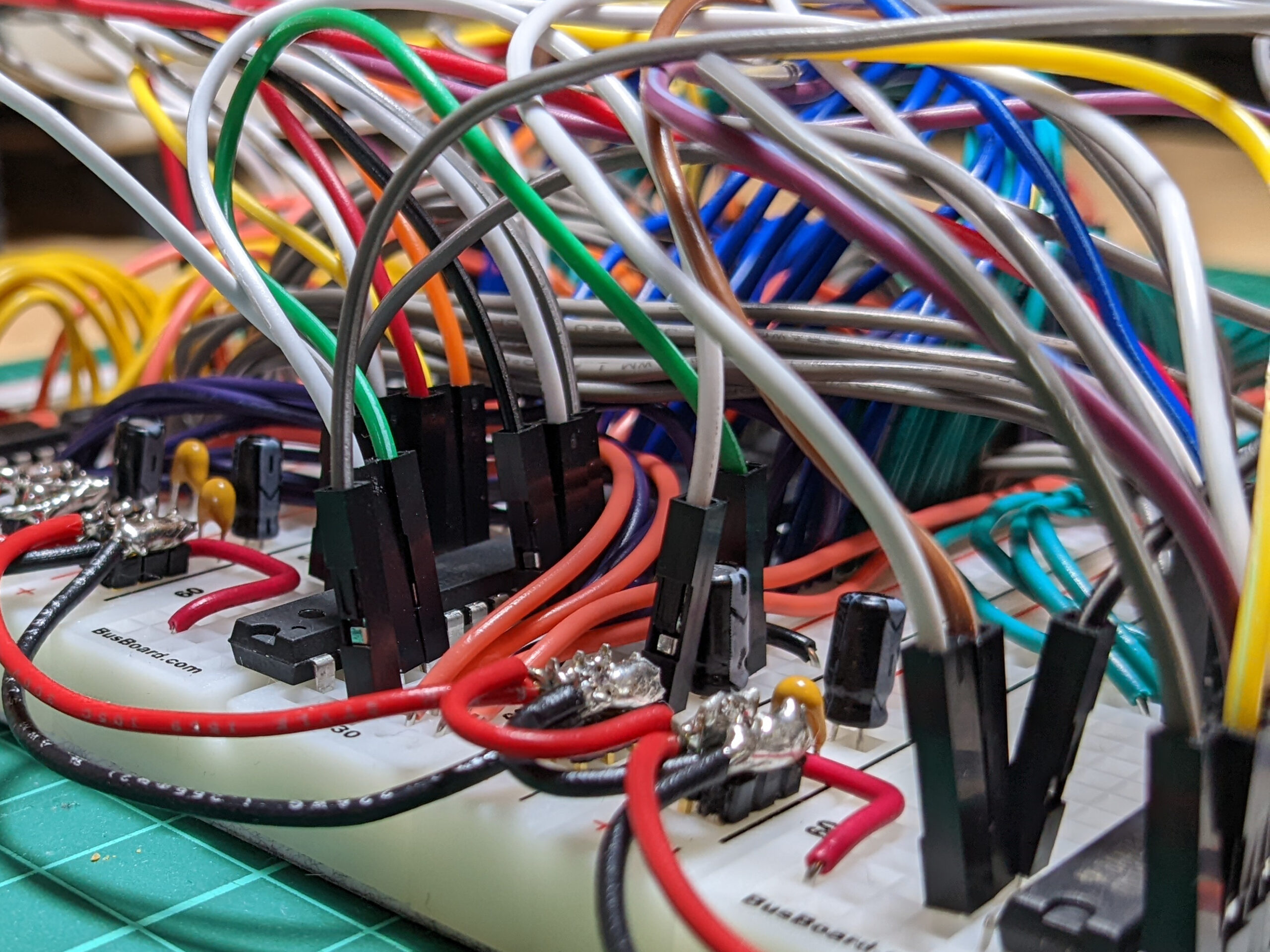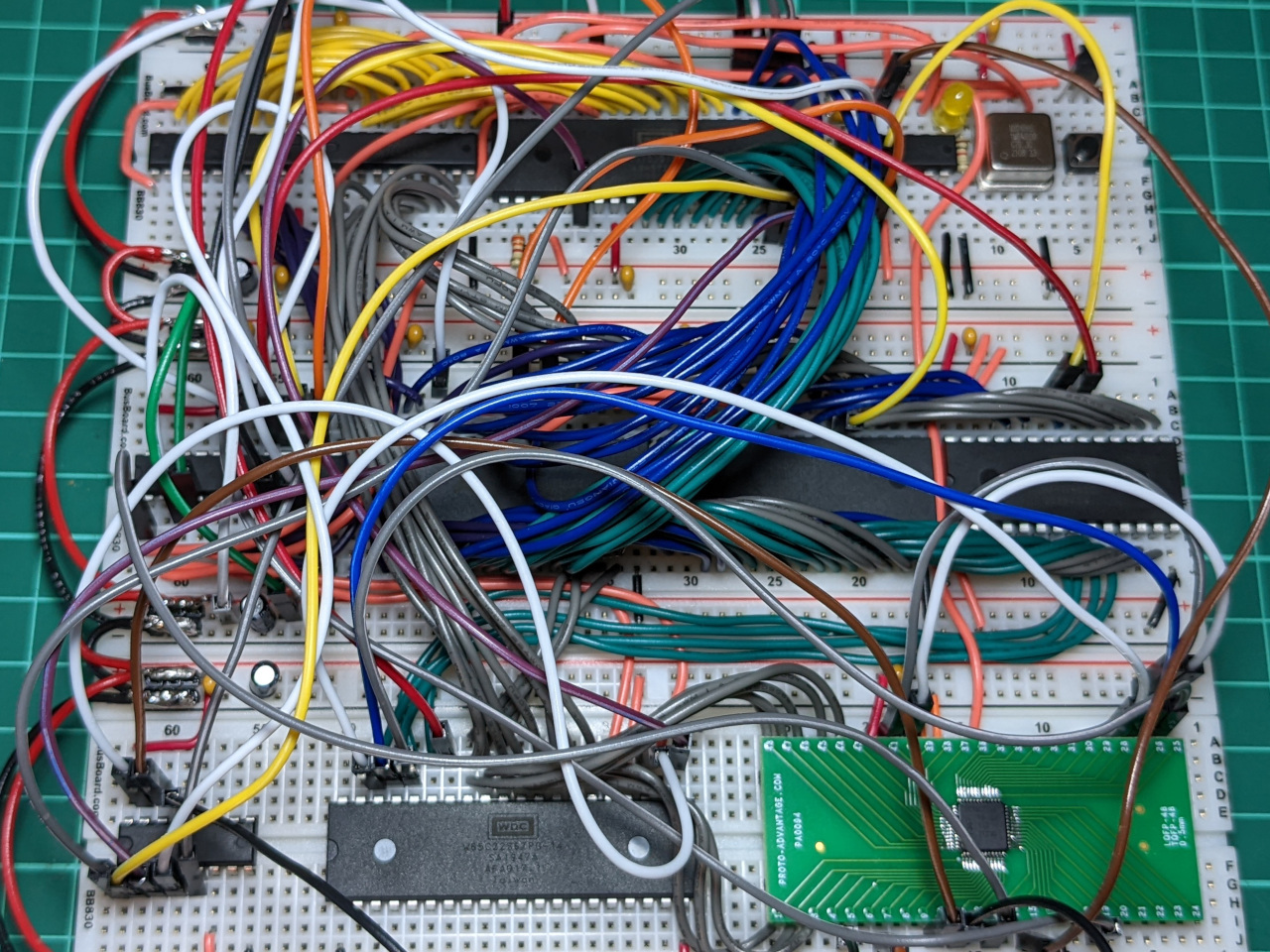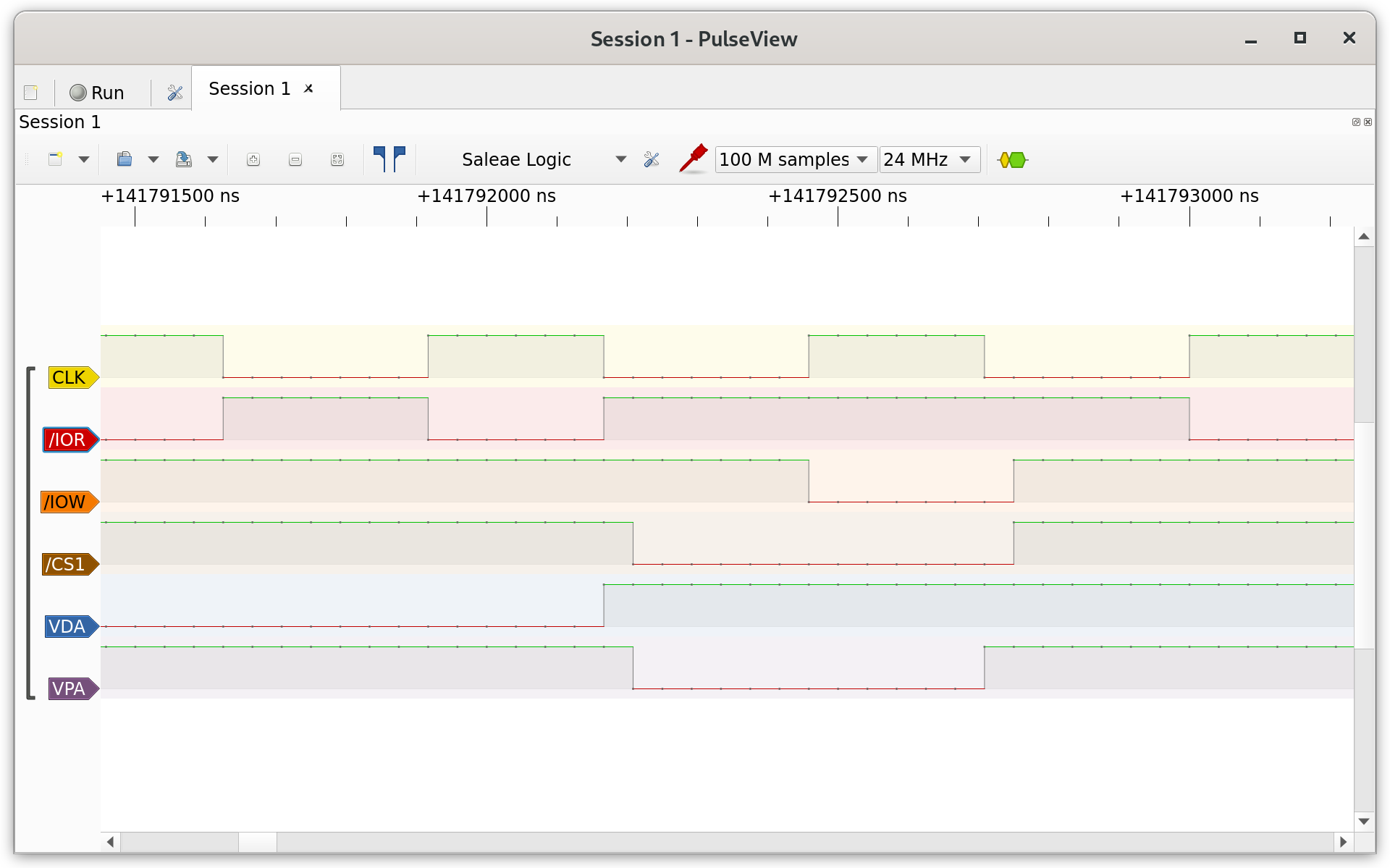Back in February, I blogged about my 65816 computer prototype on breadboards. I recently spent some time re-building this in an attempt to add some improvements.
The new prototype didn’t work particularly well, so I’ve left out quite a lot of detail from this update.
Power delivery
I soldered stranded wire to pin-headers to deliver a reliable ground and +5V power connection to each breadboard. This corrected some problems from my previous prototype, which used a long chain of unreliable connections.

Adding more RAM
I added a second 512 KiB RAM chip, and extended the address decoding scheme to provide a chip-select signal for it. The computer now uses the planned 20-bit address bus, though the wiring around these chips became very dense.

Adding a UART chip
I previously tested an NXP SC16C752 UART, and added it to this computer to provide text I/O. This is a small surface-mount chip, which I am connecting via a break-out board.
My previous prototype only supported one I/O device, so I also extended the address decoding scheme with a 74AC138 decoder.

Problems
I could get some simple test programs running, but text I/O did not work reliably at all. With my limited debugging tools (just a logic analyser), I was only able to conclude that data being written by the CPU was different to what was being received by the UART.
This seemed like it could be a timing or signal integrity issue, but I couldn’t be certain from looking at digital output with a low sample-rate. This image shows some control signals from when I was troubleshooting this.

Next steps
After hitting a dead-end, I made a list of possible causes, and decided to re-build this prototype on a debug-friendly PCB, and to source an oscilloscope for troubleshooting.
More on that in my next post!